TWIST Dual Drinking Water Filter System

Undersink Dual System for urban homes
Chloramines
Lead
Chemicals (VOC, THM)
Cysts (Cryptosporidium, Giardia)
Chlorine, taste and odour
Sediment
- Easy cartridge change technology
- Includes chrome faucet
- Certified to CSA and NSF standards
- Made in Canada
-
Click to buy online or in store at:
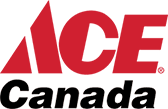

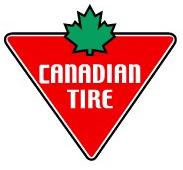



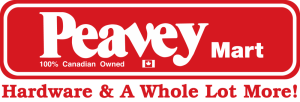



Also available in store at the following retailers:
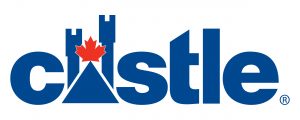

Not all models are available at all locations/retailers. If you questions regarding availability of a particular model, please call your local store or Rainfresh support.
-
For urban homes with chloramines in water
Over 11 million Canadians drink water that has been treated with chloramines . Chloramines are formed when ammonia is added to the water along with chlorine to reduce the formation of potentially cancer-causing Trihalomethanes (THMs ). However, chloramines render an offensive taste and odour to drinking water & beverages made from such water. In addition, chloramines can cause skin irritation, are corrosive by nature, and are toxic to fish.If your home water supply is also treated using chloramines , Rainfresh TWIST Dual Drinking Water System is the perfect solution. This modern water filter system delivers clean, pure water for the whole family by reducing reducing chloramines , lead , chemicals (pesticides, herbicides, insecticides, THMs , VOC , Benzene, chlorine , etc), and parasitic cysts . All the performance at a fraction of the cost of bottled water.
Installed under the kitchen sink, the TWIST Dual system features a stylish chrome faucet through which filtered water is dispensed. Filter cartridge changes are extremely easy – just grab, twist and remove!
Rainfresh TWIST is made in Canada and offers exceptional value through top performance and economy.
LIST OF MAJOR CANADIAN MUNICIPALITIES THAT TREAT WATER USING CHLORAMINES
ALBERTA : Edmonton, Lethbridge, Red DeerBRITISH COLUMBIA : Greater VictoriaMANITOBA : DauphinNEWFOUNDLAND : St. John’sONTARIO : Aurora, Brantford, Cambridge, Essex, Grey Bruce, Hamilton, Holland Landing, Kenora, Kitchener, Leamington, Markham, Newmarket, Ottawa, Queensville, Richmond Hill, Sault Ste. Marie, Sharon, Toronto, Vaughan, WaterlooQUEBEC : Trois-RivièresSASKATCHEWAN : SaskatoonPERFORMANCE
Reduces
- chloramines
- lead
- Volatile Organic Compounds (VOC) – over 50 chemicals including pesticides, herbicides, insecticides, benzene, Trihalomethanes, chloroform etc
- parasitic cysts (Cryptosporidium & Giardia)
- chlorine, taste and odour
- sediment
BENEFITS
- Clean, safe & great tasting water right at the tap!
- Exceptional performance gives you the confidence that you are getting clean, safe, pure drinking water
- Does not remove healthful minerals
- Extremely easy filter cartridge changes to maintain the quality of your water – just hold, twist and remove – no need to turn water off – NO SPILL, NO MESS
FEATURES
- Compact design that easily goes on the cabinet wall undersink without coming in the way of your storage
- Lead and BPA-free materials
- Easy cartridge change design – hold, twist and remove – no need to turn water off – NO SPILL, NO MESS
- Contemporary ceramic-disc chrome faucet,
- Cartridge replacement monitor (model QS2 & QS2K only) – lights up when the life of the filter cartridge is over
INSTALLATION
- Installs easily under kitchen or other convenient location in 45-60 minutes average.
- All fittings included to attach system under sink to ½” copper pipe. Additional connector kit required for PEX pipe
- Requires a 1/2” hole in the counter-top for the faucet or can use existing sprayer hole
- Can be installed in the basement with tube running to faucet. Unit must not be more than 10 feet away
REPLACEMENT CARTRIDGE
- Replacement cartridge models QLV & QCA
- Cartridge life = 250 US gal/946 L or 4 months for model QS2X
- Cartridge life = 350 US gal/1324L or 6 months for models QS2 & QS2K
- Available at most retail stores. Click on the “where to buy” tab for a list of retailers
TESTING & CERTIFICATION
- Tested and certified by CSA International to CSA B483.1; to NSF/ANSI Standard 53 for reduction of VOC, lead and cyst; to Standard 42 for reduction of chloramines, chlorine, taste and odour; and to NSF/ANSI 372 for lead-free requirements.
WARRANTY
- 1 year limited warranty
WHAT’S INCLUDED
Includes TWIST Dual filter system, chrome faucet, cartridges, all fittings, tubing and easy-to-follow instructions for do-it-yourself installation on copper pipe. Additional connector kit required to attach to PEX pipe
-
Download brochure (PDF):
- TWIST DUAL Brochure English
- TWIST DUAL Brochure Français
Download Performance Data Sheet (PDF):
- TWIST Dual Performance Data Sheet English
- TWIST Dual Performance Data Sheet Français
Download Product Manual
- TWIST DUAL Product Manual English and Français
-
Have more questions? Enter you own question below and our customer service will get back to you within 24 hours.
-
Buy parts online directly from Rainfresh web store
-
Rainfresh TWIST Dual System is an advanced undersink chloramine removal filter which also reduces lead, cysts, VOC, chlorine, taste and odour.
For urban homes with chloramines in water
Over 11 million Canadians drink water that has been treated with chloramines . Chloramines are formed when ammonia is added to the water along with chlorine to reduce the formation of potentially cancer-causing Trihalomethanes (THMs ). However, chloramines render an offensive taste and odour to drinking water & beverages made from such water. In addition, chloramines can cause skin irritation, are corrosive by nature, and are toxic to fish.If your home water supply is also treated using chloramines , Rainfresh TWIST Undersink Chloramine Removal Filter is the perfect solution. This modern water filter system delivers clean, pure water for the whole family by reducing reducing chloramines , lead , chemicals (pesticides, herbicides, insecticides, THMs , VOC , Benzene, chlorine , etc), and parasitic cysts . All the performance at a fraction of the cost of bottled water.
Installed under the kitchen sink, the TWIST Dual system features a stylish chrome faucet through which filtered water is dispensed. Filter cartridge changes are extremely easy – just grab, twist and remove!
Rainfresh TWIST is made in Canada and offers exceptional value through top performance and economy.
LIST OF MAJOR CANADIAN MUNICIPALITIES THAT USE CHLORAMINATION
ALBERTA : Edmonton, Lethbridge, Red DeerBRITISH COLUMBIA : Greater VictoriaMANITOBA : DauphinNEWFOUNDLAND : St. John’sONTARIO : Aurora, Brantford, Cambridge, Essex, Grey Bruce, Hamilton, Holland Landing, Kenora, Kitchener, Leamington, Markham, Newmarket, Ottawa, Queensville, Richmond Hill, Sault Ste. Marie, Sharon, Toronto, Vaughan, WaterlooSASKATCHEWAN : SaskatoonPERFORMANCE
Reduces
- chloramines
- lead
- Volatile Organic Compounds (VOC) – over 50 chemicals including pesticides, herbicides, insecticides, benzene, Trihalomethanes, chloroform etc
- parasitic cysts (Cryptosporidium & Giardia)
- chlorine, taste and odour
- sediment
BENEFITS
- Clean, safe & great tasting water right at the tap!
- Exceptional performance gives you the confidence that you are getting clean, safe, pure drinking water
- Does not remove healthful minerals
- Extremely easy filter cartridge changes to maintain the quality of your water – just hold, twist and remove – no need to turn water off – NO SPILL, NO MESS
FEATURES
- Compact design that easily goes on the cabinet wall undersink without coming in the way of your storage
- Lead and BPA-free materials
- Easy cartridge change design – hold, twist and remove – no need to turn water off – NO SPILL, NO MESS
- Contemporary ceramic-disc chrome faucet,
- Cartridge replacement monitor (model QS2 & QS2K only) – lights up when the life of the filter cartridge is over
INSTALLATION
- Installs easily under kitchen or other convenient location in 45-60 minutes average.
- All fittings included to attach system under sink to ½” copper pipe. Additional connector kit required for PEX pipe
- Requires a 1/2” hole in the counter-top for the faucet or can use existing sprayer hole
- Can be installed in the basement with tube running to faucet. Unit must not be more than 10 feet away
REPLACEMENT CARTRIDGES FOR UNDERSINK CHLORAMINE REMOVAL FILTER
- Replacement cartridge models QLV & QCA
- Cartridge life = 250 US gal/946 L or 4 months for model QS2X
- Cartridge life = 350 US gal/1324L or 6 months for models QS2 & QS2K
- Available at most retail stores. Click on the “where to buy” tab for a list of retailers
TESTING & CERTIFICATION
- Tested and certified by CSA International to CSA B483.1; to NSF/ANSI Standard 53 for reduction of VOC, lead and cyst; to Standard 42 for reduction of chloramines, chlorine, taste and odour; and to NSF/ANSI 372 for lead-free requirements.
WARRANTY
- 1 year limited warranty
WHAT’S INCLUDED
Includes TWIST Dual filter system, chrome faucet, cartridges, all fittings, tubing and easy-to-follow instructions for do-it-yourself installation on copper pipe. Additional connector kit required to attach to PEX pipe
-
Reviews
Add a review Cancel reply


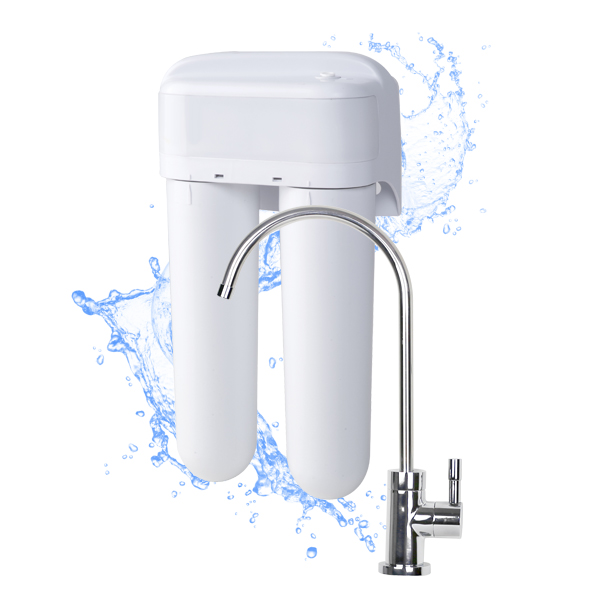
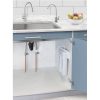
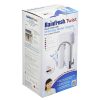
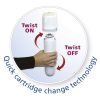
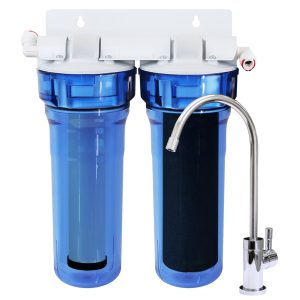
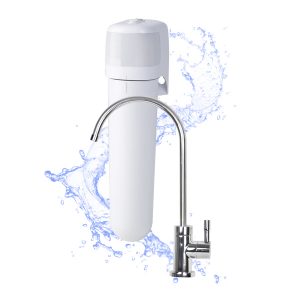
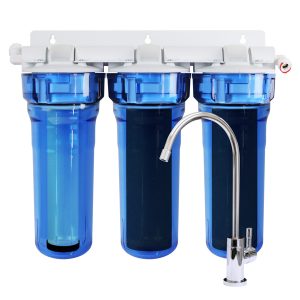
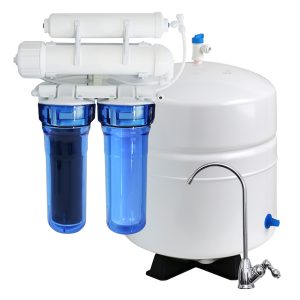
Awesome product. Our water tastes fantastic. Couldnt find a product anywhere that removes chloramines from our water in Lethbridge. This Twist system works great and I really like the quick change filter design. The supply valve included is for copper only though.
I have used this system for 3 yrs now, and it does a good job removing contaminants. But those twist on cartridges are expensive, and last time I replaced both, one of them started to leak after a month but they would not exchange unless I had kept the receipt. Not sure why the recept is so important because it only affected one of the 2, and obviously it was a Rainfresh cartridge. So, better make sure you keep receopts in case of problems.